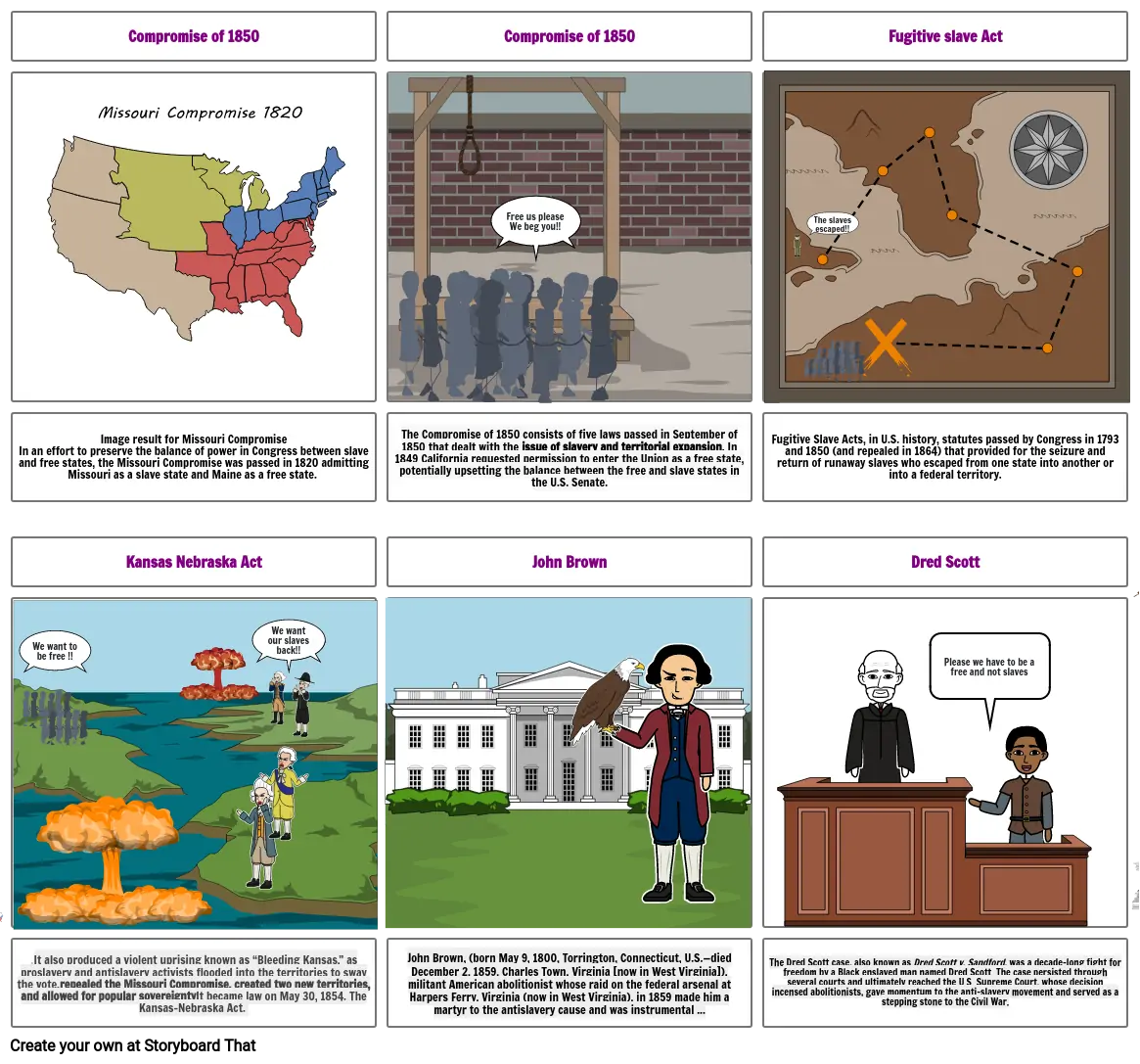Timeline Causes of Civil War

Storyboard Text
- Compromise of 1850
- Compromise of 1850
- Free us please We beg you!!
- Fugitive slave Act
- The slaves escaped!!
- Image result for Missouri CompromiseIn an effort to preserve the balance of power in Congress between slave and free states, the Missouri Compromise was passed in 1820 admitting Missouri as a slave state and Maine as a free state.
- Kansas Nebraska Act
- We want to be free !!
- We want our slaves back!!
- The Compromise of 1850 consists of five laws passed in September of 1850 that dealt with the issue of slavery and territorial expansion. In 1849 California requested permission to enter the Union as a free state, potentially upsetting the balance between the free and slave states in the U.S. Senate.
- John Brown
- Fugitive Slave Acts, in U.S. history, statutes passed by Congress in 1793 and 1850 (and repealed in 1864) that provided for the seizure and return of runaway slaves who escaped from one state into another or into a federal territory.
- Dred Scott
- Please we have to be a free and not slaves
- .It also produced a violent uprising known as “Bleeding Kansas,” as proslavery and antislavery activists flooded into the territories to sway the vote.repealed the Missouri Compromise, created two new territories, and allowed for popular sovereigntyIt became law on May 30, 1854. The Kansas-Nebraska Act.
- John Brown, (born May 9, 1800, Torrington, Connecticut, U.S.—died December 2, 1859, Charles Town, Virginia [now in West Virginia]), militant American abolitionist whose raid on the federal arsenal at Harpers Ferry, Virginia (now in West Virginia), in 1859 made him a martyr to the antislavery cause and was instrumental ...
- The Dred Scott case, also known as Dred Scott v. Sandford, was a decade-long fight for freedom by a Black enslaved man named Dred Scott. The case persisted through several courts and ultimately reached the U.S. Supreme Court, whose decision incensed abolitionists, gave momentum to the anti-slavery movement and served as a stepping stone to the Civil War.
Over 30 Million Storyboards Created

